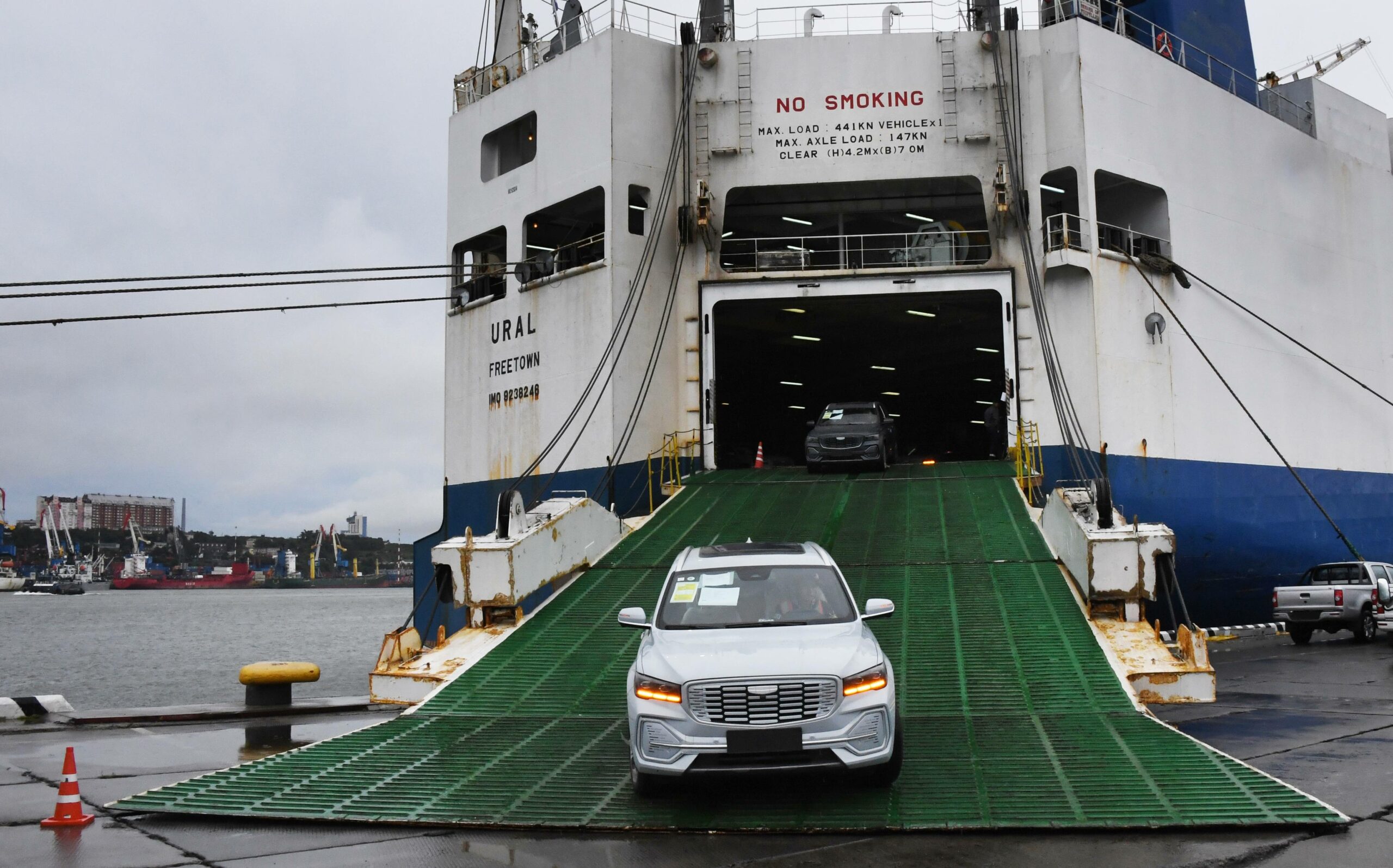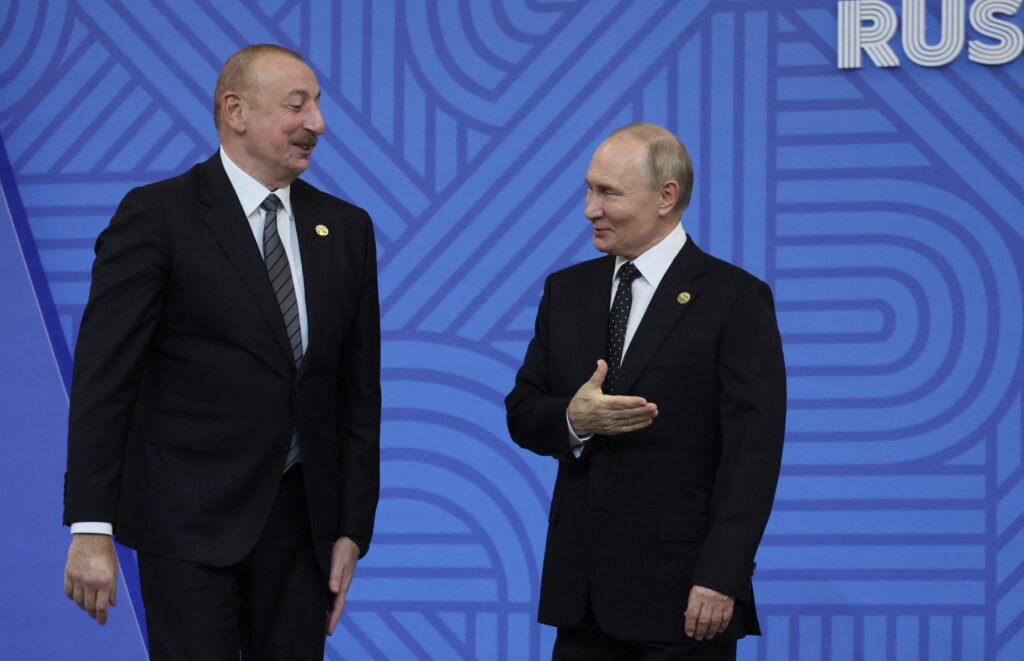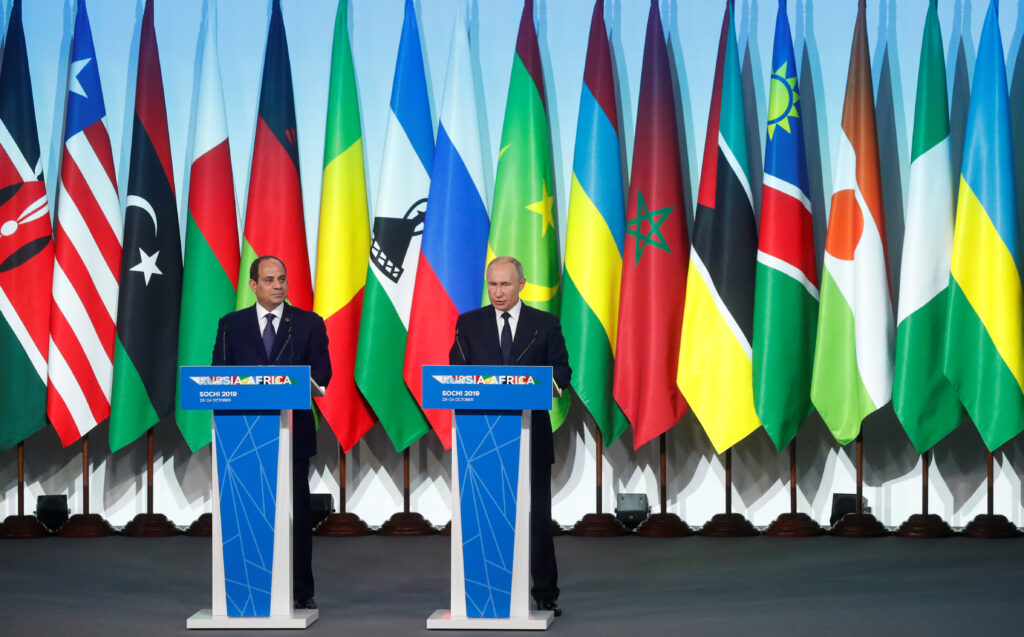Since the outbreak of Russia’s full-scale war against Ukraine, China’s dominance in various sectors of the Russian economy has reached significant proportions, and the volume of Chinese imports into the country has hit record levels. Against the backdrop of Russia’s growing economic dependence on China, President Putin speaks of relations between the two countries reaching «the highest level in history», while Russian companies are building their plans with Chinese partners in mind. But a closer look at these trends from a different angle — through the prism of what Chinese companies have free access to thanks to the «comprehensive partnership» with Russia — reveals a hidden side that strengthens China’s potential and opportunities in global markets while seriously damaging many sectors of the Russian economy. A case in point is the Russian truck industry.
The pre-war situation
For two decades, up until February 2022, the truck industry in Russia developed in line with trends typical of industrialized countries. The Russian government took an active part in regulating the industry, relying on the priority development of the national truck manufacturer, KAMAZ. This company received all kinds of state support. At the same time, Russia’s balanced industrial policy made it possible to attract the world’s leading manufacturers of heavy-duty trucks, who over the years have invested billions of dollars in the development of production, dealer and service infrastructure.
The entry of the «European Seven» (Europe’s largest truck manufacturers: Scania, MAN, Volvo Trucks, Daimler Trucks, DAF, Iveco and Renault Trucks) into the Russian market has been a major achievement, creating an extensive dealer network in the country that sells, repairs and services heavy trucks to the best international standards. Almost all of these truck manufacturers have opened their own truck plants in various Russian regions. In 2011, Daimler Trucks, in partnership with KAMAZ, lauched production of Mercedes-Benz trucks at the joint venture’s production line in Tatarstan’s second largest city of Naberezhnye Chelny and later opened a full-cycle truck cab plant. Volvo Trucks opened its truck production plant in Kaluga and later localized truck cabs, some of which were exported to the group’s European site (and Volvo Trucks itself described the Kaluga plant as «the most modern in the company’s production system in the world»). Sweden’s Scania and Germany’s MAN developed assembly production of tractors and dump trucks at a single site in St Petersburg, while Italy’s Iveco, in alliance with a local partner, produced heavy trucks at plants in the Chelyabinsk region.
These groups were working to expand their industrial presence in Russia, deepen localization and further invest in production. In 2018, Daimler Trucks signed a 10-year special investment contract (SPIC) with KAMAZ that envisaged more than $ 700 million in new investments to modernize plant equipment, develop the production of key automotive components, expand the model range and increase exports. Volvo Trucks had similar plans and was in talks with the Russian Ministry of Industry and Trade to sign a separate SPIC, while Scania and MAN were preparing to invest in the localisation of their truck range at GAZ Group’s facilities in Nizhny Novgorod.
For each of the European companies, the facilities being built and developed in Russia were an integral part of the global production system, with unified engineering, technical and IT solutions, established supply chains and skilled personnel. Nothing similar was done by Chinese truck equipment manufacturers, for whom Russia was seen as a small sales market rather than an object for investment and long-term business development.
Accordingly, in the years before the full-scale war broke out, Russia had a very competitive truck industry and a large domestic market for heavy trucks, dominated year after year by KAMAZ with highly localized products and a 50−60% market share; the «European Seven» with locally produced and imported models and a 30−40% market share; Chinese importers with a 1−5% market share, and a number of other players.
Post-24.02.2022 realities
The war brought about significant adjustments in the industry. The «European Seven» suspended local production and imports to Russia, and soon each of the European companies got rid of its Russian production, sales, service, financial and leasing assets and left the Russian market. Daimler Trucks transferred its stake in the joint venture to KAMAZ. MAN and Scania ceased production and sold the assets of their Russian sales subsidiaries to local dealers. Iveco withdrew from the joint venture and transferred its share to its local partner. Volvo Trucks transferred its assets to a Russian businessman from the banking sector, and the ultimate owner of the Kaluga plant is now a group of companies linked to a major Russian industrialist.
Chinese companies, on the other hand, began to strengthen their presence in the truck market and took an active part in the reformatting of the industry. After becoming partners of the new owners of these assets, Chinese manufacturers such as Sinotruk (Sitrak and Howo brands), FAW, Dongfeng, JAC, Dayun, Hongyan and others received hundreds of dealerships and service stations previously owned by the «European Seven» and began to develop them, expanding the opportunities for the penetration of their trucks into the Russian market through the already built and developed network for the sale, maintenance and repair of equipment. Soon, Chinese-made trucks began to aggressively conquer the market, replacing not only imported European trucks but also Russian-made vehicles.
While in 2021, the share of Chinese brands in the medium- and heavy-duty vehicle market was around 10% in 2021, it had risen to 30% by the end of 2022 and exceeded 55% by 2023. According to data for January-April 2024, their share reached 62.4%, with the Chinese brands in the tractor and dump truck segments accounting for nearly 80%. The total number of Chinese trucks registered in the country has already reached 205 thousand vehicles, exceeding the number of all European brands except the Swedish ones. KAMAZ’s share of the market, on the other hand, fell from 38% in 2021 to 22% by the end of 2023 and to 18% in the first five months of 2024. Moreover, in 2023, KAMAZ trucks for the first time lost the lead in the Russian market to a «foreign truck» — the Chinese Sitrak C7H tractor. Given such trends, it is likely that in the near future the head of KAMAZ, following the president of AVTOVAZ, will soon announce the threat of «Chinese expansion» to the Russian automotive industry and the risk of reducing production by up to 50%, and call on the Russian authorities to urgently protect the domestic market from «the obscure Chinese brands».
In parallel with the growth in market share, the Chinese have been raising the prices of their trucks (by at least 30% in 2023), due both to the change in the ruble/yuan exchange rate and the increase in the recycling fee for imported vehicles, and also due to reduced competition following the departure of the «European Seven» brands. Given that truck sales in Russia reached a post-Soviet record last year, it is clear that Chinese truck manufacturers have a significant advantage in the Russian market, as they do not yield to their compatriots in the passenger car segment production in terms of profit volume.
Nevertheless, none of them is prepared to localize production of their products in Russia, preferring to continue saturating the Russian market with imported equipment and avoiding investment in the real sector of the economy. The reason for this is not only the risk of Chinese business falling under US secondary sanctions and the growing difficulties in foreign trade settlements with Russian counterparts, but also the typical Chinese business model in the commercial vehicle segment, which is implemented in other foreign markets. According to this model, priority is given to selling relatively cheap vehicles through a large number of dealers, while vehicle maintenance and the development of related products take a back seat.
This is why Russian hauliers — owners of Chinese trucks — are not only complaining about the low quality of the vehicles, but are also raising the alarm about the limited warranty and service support for the equipment supplied, the lack or shortage of spare parts and components in most of the dealer centers, the chaotic supply of these spare parts, and the long periods of maintenance and repair of the trucks. The problem of quality of service and its availability has become particularly acute for transport companies. If before the onset of the full-fledged invasion the bulk of consumer goods were delivered on a short logistics leg from Kaliningrad, St Petersburg or the border with Belarus, now the goods are transported on a much longer leg from China, which has a significant impact on the state of the fleet. Without timely maintenance, the trucks’ productivity declines, service intervals are shortened, the likelihood of premature breakdowns and downtime increases, resulting in higher costs for carriers and, ultimately, a further increase in the already skyrocketing cost of logistics services.
On the other hand, Chinese manufacturers themselves are discovering many useful things as they gain a foothold in the Russian market and master the European «legacy.»
Appropriating what Europeans have left behind
Over the years, the «European Seven» have trained thousands of Russian specialists, including mechanics, technicians and drivers, passing on to them the knowledge and experience, professional and managerial skills that have ensured high standards in the trucking, transport logistics and forwarding industries. In addition, the Europeans left behind first-class equipment and technologies used in the manufacture, repair and maintenance of trucks. As a result, Russian personnel trained by the Europeans, localized technologies, knowledge, know-how and solutions that have traditionally been the competitive advantage of European brands are now available to Chinese companies and are being used by them to develop new business models and strengthen their positions across global markets.
This can be seen, for example, in the steps taken by Scania’s former exclusive distributor in Russia, BVG, which has switched its focus to the Chinese truck manufacturer Sinotruk, or the activities of what used to be the best DAF dealer in Russia, BornTrakService, which has switched its business to the Chinese company Dongfeng. These companies explicitly state that Chinese manufacturers do not have a unified approach to service, and they are systematizing this work in Russia, transferring their experience to Chinese partners and enriching them with new knowledge in the field of machine service and maintenance through the use of digital solutions. Thanks to highly qualified Russian personnel with solid experience in leading European companies under their belt, Chinese companies are obviously gaining very useful insights into the specifics of critical data processing technologies, such as Scania’s fleet monitoring system or the Paccar Connect fleet management platform. Not to mention the knowledge needed to develop professional services such as trade-in, used truck sales, insurance and operating leasing, driver training based on data from telematics systems and a number of others.
The former Kaluga plant of Volvo Trucks, which has been renamed Automobile Motor Company and started assembling Ural trucks, can share its experience in developing the production of European premium segment vehicles with a potential partner: Dongfeng Concern. And the former joint venture between Daimler Trucks and KAMAZ, renamed Trax Vostok Rus, has completely refocused on the production of the «Compass» medium-duty van, which is based on components from the Chinese truck manufacturer JAC.
All this knowledge is very useful for Chinese manufacturers in refining and improving business processes, raising the standard of work in their divisions and building a corporate culture in line with international practices. Their application can strengthen the positions of the Chinese brands in competition with the «European Seven» and even undermine their dominance in the European market.
Russian manufacturers, on the other hand, are forced to adapt to simpler, outdated business models and solutions, spending resources and time on training partners, building logistics and organizing timely deliveries of spare parts from China in order to «provide Russian dealers with the European-level service they are used to», with no guarantee that partnerships with Chinese brands will be long-term and not interrupted by the growing risk of sanctions.
Despite the perceived benefits of partnering with Chinese companies, the Russian truck industry found itself in an extremely vulnerable position. The departure of European manufacturers created a vacuum that was quickly filled by Chinese companies, which not only took over the market but also absorbed the service infrastructure, technology and skilled personnel left behind by European brands. Using these resources, knowledge and business solutions that do not belong to them, they are strengthening their position in the Russian market, undermining the business of local manufacturers, while in the international market they are likely to use these same business solutions and resources against their very owners and creators.
Other Russian players — distributors, dealers and industry-related financial and leasing organizations — regularly face new challenges as they adapt to the conditions dictated by their Chinese partners and find ways to survive in the face of increasing sanctions pressure on the Russian economy. These trends not only reflect current economic realities, but also lay the groundwork for the industry’s total dependence on China, with all the political and economic consequences that entails.










